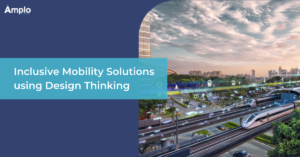Corporate Communications: Absolute Revolutionary of 10X Design Thinking
Your organization needs to incorporate design thinking into its corporate communications. Here’s why:
Without a doubt, design has always been a crucial part of creating content. However, design thinking can also play a critical role in distributing content as well. The communication process, like any other operation within an organization, stands to benefit immensely from leveraging design thinking.
Since content is created by humans for humans and communication is the exchange of ideas between humans, the human-centered design thinking approach is well suited for both content and communication.
Corporate communications can take the form of internal communications, external communications, and frequently overlooked interpersonal communications. Internal communications can be viewed as the dissemination of information within the organization, across distant functions and business units, and top-down information flow from leadership.
External communications may comprise the company sharing of information with the press, customers, industry competitors and players, and occasionally governments or other regulatory authorities. Interpersonal communications may include casual coffee break conversation or formal conversation during boardroom meetings.
The process of design thinking is one of empathy and inclusion. If design thinking is employed for any form of the aforementioned communication, by default, this communication becomes more inclusive.
When planning and executing internal corporate communication, following design thinking steps involves input from employees across the ranks of said corporation. This process gives a voice to employees who may not usually be able to state their needs and challenges, giving the leadership an accurate view of their organization and its culture.
Continuing this process is likely to break down data silos that divide different departments and ranks of employees. In addition, when more ideas are welcomed through the center stage and wider discussions, more ideas emerge that are rich in creativity and inclusion, thanks to a larger pool of perspectives.
This form of communication makes a company’s message to their consumer / customer WORD MISSING in ways that closely connect with their day to day challenges, needs, and aspirations, allowing the company to do better business.
As far as interpersonal communication is concerned, once the top-tier leadership embraces the empathetic and inclusive communication style provided by design thinking, there is an observable trickle down effect.
Companies with good internal communication strategies tend to also be great at interpersonal communication, conflict management, employee satisfaction, and improved work experience.
Content is influenced by design thinking much like communication as observed earlier. When we create content with the design thinking approach and embrace the practice of prototyping, the content can be more critically analyzed and improved.
Design thinking also encourages collaboration. As diverse inputs are gathered in the process of content creation, they lead to better content. It must also be noted that when there are more people working on a piece of content or the overall content strategy, more content can be produced through division of labor, increased efficiency, and data exchange.
As the fourth industrial revolution, industry 4.0 revolutionizes businesses with cutting edge technologies, design thinking may be our only way to inject humanity into an otherwise mechanized, digital world. In fact, by injecting empathy, inclusivity, and diversity into work processes and communication, organizations can optimize the transformational growth brought on by industry 4.0.
Corporate Communications: Embrace Design Thinking for impactful strategies, innovation, and engaging connections.
Discover how incorporating design thinking principles enhances the effectiveness of your communication initiatives.
Through iterative ideation, prototyping, and testing, design thinking empowers you to uncover new possibilities, solve complex communication challenges, and drive innovation in your organization.









































































